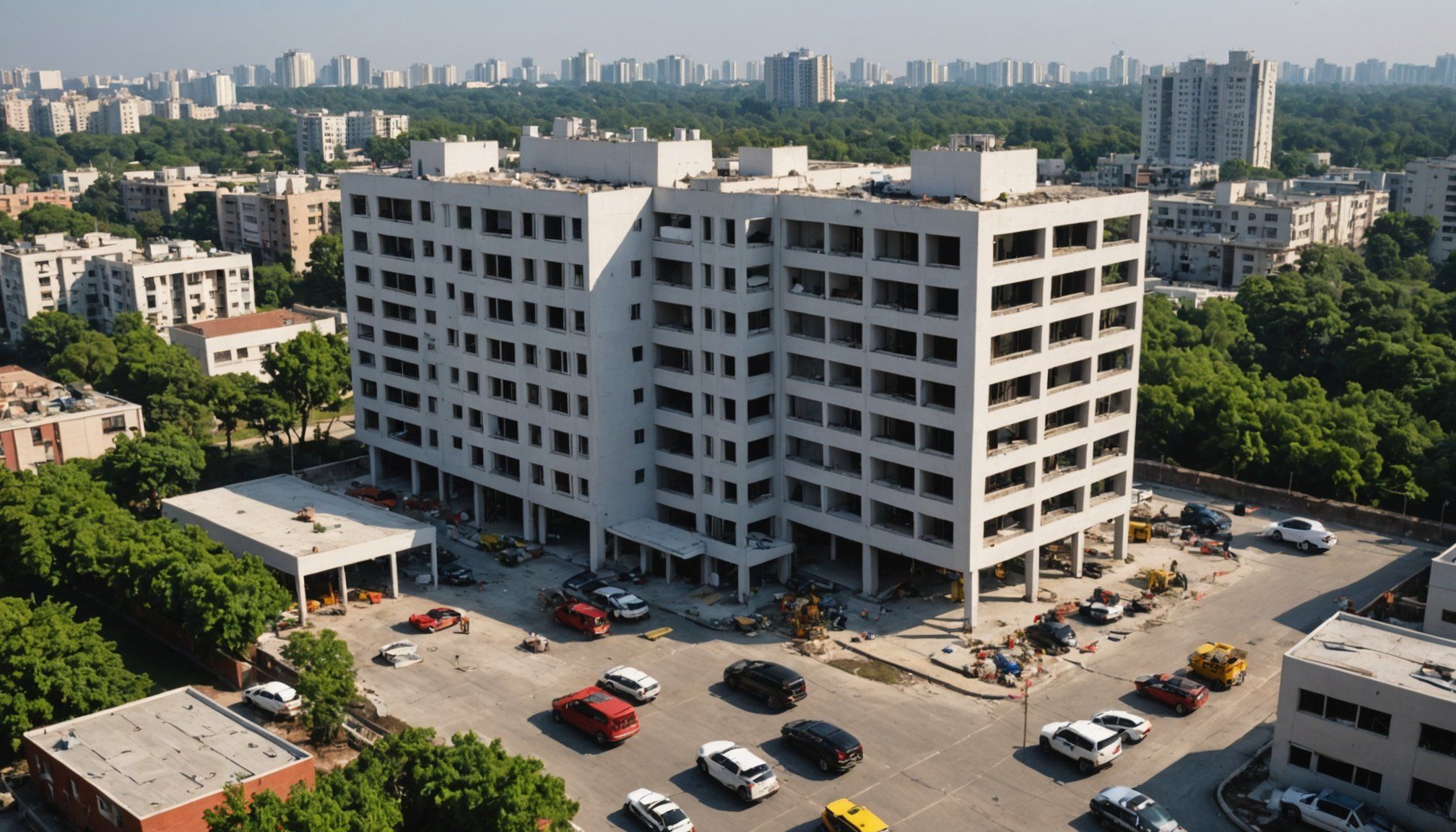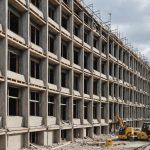Understanding the Unique Challenges of High-Density Residential Complexes
High-density living presents unique challenges that require careful consideration. In such environments, the sheer volume of residents increases the likelihood of emergencies. Fire outbreaks, natural disasters, and infrastructure failures are common types of emergencies faced. The presence of numerous individuals in confined spaces can exacerbate these situations, necessitating thorough planning and emergency preparedness.
The impact of population density on emergency response effectiveness cannot be overstated. High-density settings often lead to congested evacuation routes, delaying safe exits for residents. Furthermore, the swift spread of fire or disease can occur given the close proximity of living quarters. This highlights the need for well-coordinated action plans and regular safety drills to ensure that all residents know how to respond promptly and safely.
In parallel : Top Marketing Tactics for Successfully Promoting Rental Properties in Competitive UK Markets
Emergency preparedness in these complexes involves not only individual readiness but also community-wide strategies. Establishing clear communication channels and assigning roles during an emergency can significantly enhance response times. Moreover, equipping buildings with advanced safety technologies and maintaining them can mitigate potential risks. Encouraging collaboration between residents, management, and local emergency services is key to creating robust emergency protocols tailored to the nuances of high-density living.
Assessing Risks in High-Density Environments
In densely populated areas, effective risk assessment is crucial. It involves several techniques to ensure the safety of residential complexes. Comprehensive risk assessments begin with thorough threat identification. This step includes recognizing both natural and human-made threats. For instance, potential natural threats could be earthquakes or floods, while human-made threats might involve security breaches or fire hazards.
This might interest you : Unlocking Profit: The Economic Advantages of Investing in Properties Adjacent to UK Science Parks
Once threats are identified, the next focus is on vulnerability analysis. This process entails evaluating how susceptible a community is to identified threats. Important aspects include building structures, emergency exits, and the community’s preparedness for unexpected events. Another key point is assessing the complex’s surveillance systems and access controls.
Identifying potential threats specific to residential complexes can be challenging. Natural threats like extreme weather are often predictable. However, human-driven threats, such as break-ins, depend on recent criminal activities in the vicinity. By gathering data on past incidents and consulting local security experts, residents can have a clearer picture of what to be cautious about.
For effective risk management, involving the community is beneficial. Engaging residents in security drills and educating them about emergency procedures creates a shared responsibility for maintaining safety. Many complexes have started using technology like smart surveillance to monitor and mitigate threats efficiently.
Developing an Emergency Response Plan
An effective emergency response plan is essential for any community aiming to swiftly address unforeseen crises. It contains several key components integral to its robustness. The core preparation strategies include risk assessment, identifying potential threats, and understanding their impact.
Collaboration with local authorities like the fire department and medical services is indispensable. Their expertise aids in crafting procedures that make response swift and efficient. Establishing communication protocols ensures immediate action, reducing potential damages.
Encouraging community engagement is pivotal. Involving residents not only informs them but unwittingly recruits them as the frontline in emergencies. Holding workshops and drills can increase community preparedness. This engagement boosts the community’s understanding of the plan, fostering a shared responsibility for safety.
Additionally, practice makes perfect. Regularly testing and updating the plan to reflect changing threats or issues helps in maintaining its effectiveness. It’s about building a community that’s always ready to act rapidly and in unison when faced with an emergency.
By focusing on these main areas, communities can ensure that their emergency response plans are functional, comprehensive, and able to mitigate risks effectively.
Evacuation Strategies for High-Density Living
In high-density living environments, establishing evacuation procedures is crucial for safety. Effective strategies begin with clear emergency routes. These routes should be well-marked, with signs directing people to exits quickly. It’s essential to ensure that corridors and staircases remain unobstructed to facilitate smooth movement.
Managing crowd behavior during evacuations is another vital aspect. Stress and panic can lead to chaos, so maintaining a calm environment is important. One approach is to conduct regular evacuation drills to make residents familiar with the process. This familiarity can significantly reduce anxiety and improve compliance during actual emergencies.
Additionally, special considerations must be given for vulnerable populations. Individuals with mobility issues, the elderly, and families with young children may require additional support. It’s advisable to develop specific plans that address these needs, such as designated assistance teams or priority evacuation routes.
By incorporating these elements into an evacuation plan, high-density living areas can enhance resident safety and ensure a coordinated response in emergencies. Regular updates and communication about these procedures help maintain preparedness and confidence among all residents.
Training and Drills for Residents and Staff
In the realm of emergency training, meticulous preparation is essential. Residents and staff require well-structured programs to equip them with the necessary skills for swift and effective responses during emergencies. Training programs should cover a wide range of scenarios, ensuring participants can handle diverse situations with confidence. These initiatives lay the groundwork for a community’s ability to respond cohesively when unexpected events occur.
Regular drills and simulations form the backbone of community readiness. By simulating real-life emergency conditions, both residents and staff become familiar with the protocol, reducing anxiety and enhancing performance in actual situations. Such rehearsals allow individuals to practice their roles, refine response tactics, and identify potential areas for improvement within the emergency training framework.
Assessing the effectiveness of these training initiatives is crucial for the evolution of a robust community readiness plan. By employing feedback loops and performance evaluations, authorities can pinpoint strengths and weaknesses in the existing procedures. This iterative process ensures that the training remains relevant and practical, adapting to new challenges that may arise.
Ultimately, the combination of comprehensive education and routine practice is key to building a resilient community well-prepared to face potential emergencies.
Collaborating with Local Emergency Services
Collaborating with local authorities is crucial for an effective emergency response. By fostering partnerships, we ensure that emergency services collaboration operates seamlessly, enhancing our collective ability to respond to crises. Initiating partnerships involves understanding the specific needs and capacities of each local service and establishing mutual goals and expectations.
A vital component of successful collaboration is developing effective communication strategies with authorities. Clear and consistent communication channels must be established to facilitate real-time information sharing. This includes regular meetings, joint training sessions, and the use of technology to ensure both awareness and preparedness for emergency situations.
Coordinating resource sharing plays a significant role in empowering emergency services. This strategy involves understanding what resources each entity can offer, such as manpower, equipment, or facilities, and how they can be optimally utilized during a crisis. By pooling resources, local emergency services can respond more swiftly and effectively, minimizing the impact of emergencies.
Building these partnerships not only strengthens the response capabilities but also fosters trust between different services. This trust is essential when coordinating complex operations under pressure and ensures a more resilient community overall. When local authorities and emergency services unite, the shared vision results in improved safety outcomes.
Legal and Regulatory Considerations
In the realm of emergency regulations, understanding the relevant laws and guidelines is paramount for both property management and residents. These laws ensure everyone is adequately prepared during crises. Compliance with safety standards is not just a legal mandate but a crucial element in safeguarding lives and property.
Overview of Relevant Laws
Emergency regulations encompass a range of legislations aimed at ensuring safety during unforeseen events. Key areas include fire safety codes, evacuation protocols, and the installation and maintenance of emergency systems. Familiarity with these regulations is vital for compliance and effective emergency response.
Ensuring Compliance with Safety Standards
Both property management and residents must prioritize adhering to safety standards. Non-compliance can lead to hefty fines and increased risk during emergencies. Regular inspections, safety drills, and up-to-date safety equipment are essential practices for maintaining compliance.
Responsibilities Under Law
Property management has clear responsibilities, such as ensuring building safety infrastructure meets regulatory standards. This includes maintaining clear emergency exits and functional alarms. Residents, on the other hand, should be aware of and participate in safety drills and understand how to use emergency equipment. Engaging proactively with regulations not only ensures safety but also fosters a culture of preparedness and resilience.
Case Studies and Best Practices
Examining successful strategies in emergency response across different settings offers insightful lessons. These case studies showcase the importance of adapting plans to specific environments, particularly in high-density urban areas. An analysis of effective emergency response plans reveals that flexibility and communication are crucial components.
One case study highlights how Tokyo’s earthquake preparedness plan incorporates technology, such as real-time alerts, which significantly boosts response times. This innovative strategy ensures that information is swiftly relayed to mitigate damage and protect lives. Furthermore, integrating community training programs has proven to foster resilience among residents.
In New York City, the incorporation of digital platforms for emergency response allows for streamlined coordination between various agencies. This urban area’s lessons learned emphasize the necessity of robust infrastructure to handle high volumes of information during crises. Simple solutions like pre-established evacuation routes can greatly enhance safety.
Looking at the lessons learned from past emergencies underscores the need for continuous evaluation and improvement of current strategies. Identifying gaps in current practices and implementing innovative solutions, such as mobile communication units, can significantly enhance response capabilities. As such, these practical examples serve as essential references for improving and refining emergency strategies worldwide.











